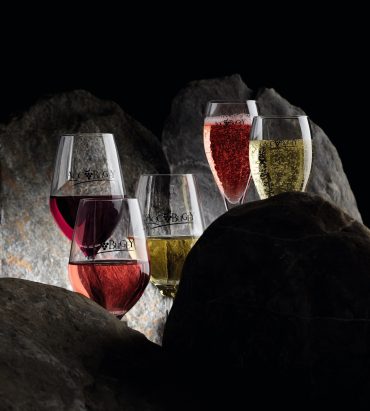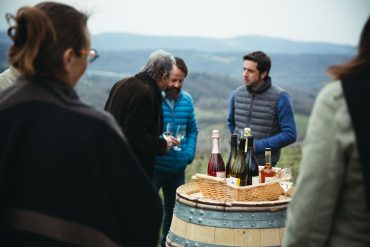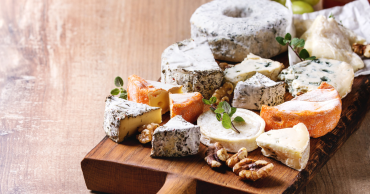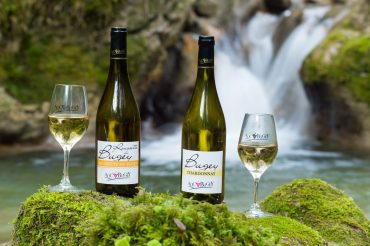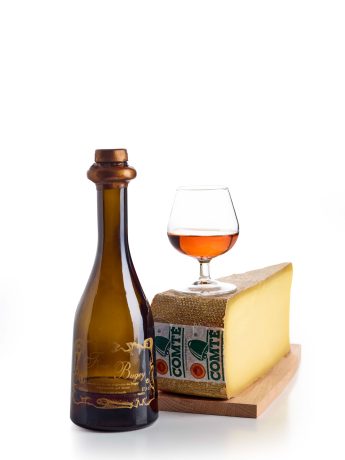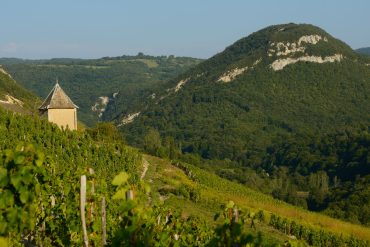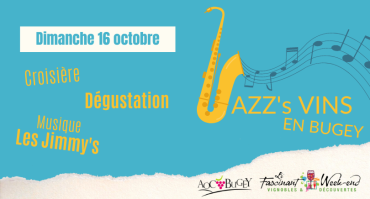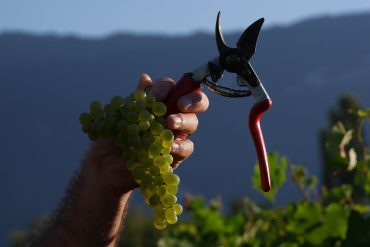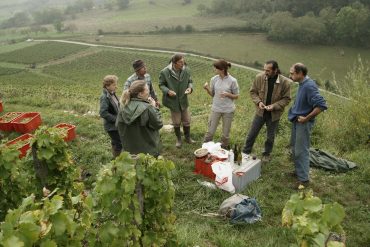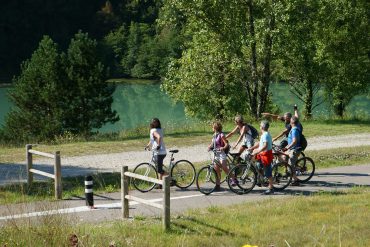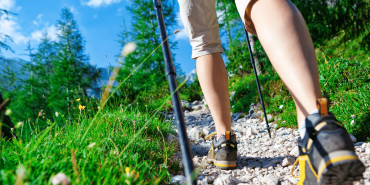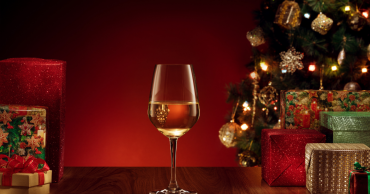
Bienvenue dans le Bugey
Découvrez les vins du Bugey
Reconnus AOC en 2009, les vins du Bugey s’étendent sur une surface de production d’environ 500 hectares répartis au Sud du département de l’Ain, sur trois zones : Cerdon, Montagnieu et Belley. 3 terroirs avec 2 appellations AOC Bugey et AOC Roussette du Bugey ainsi que 2 indications géographiques : IG Marc du Bugey et IG Fine du Bugey.
Sur ces terroirs se distinguent 9 vins appartenant aux deux appellations : AOC Bugey, AOC Bugey Manicle, AOC Bugey Montagnieu, AOC Roussette du Bugey, AOC Roussette du Bugey Montagnieu, AOC Roussette du Bugey Virieu le Grand, AOC Bugey mousseux ou pétillant, AOC Bugey mousseux ou pétillant Cerdon, AOC Bugey ou pétillant Montagnieu.
L’encépagement principal varié offre des vins avec un panorama aromatique s’accordant à tous les palais : Gamay, Pinot Noir et Mondeuse Noire pour les vins rouges et rosés, Poulsard et Gamay pour les Bugey Cerdon, Chardonnay pour les blancs et les méthodes traditionnelles, enfin Altesse pour la Roussette du Bugey.
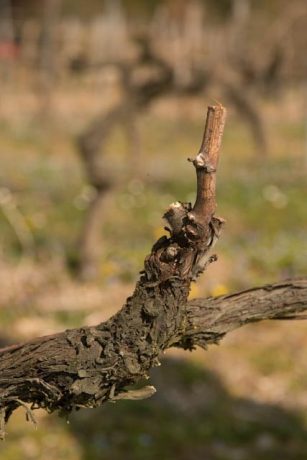
Toute l’actualité de nos thématiques préférées
Un territoire enivrant
Bienvenue dans le Bugey ! Découvrez les Vins du Bugey, l’AOC Bugey, le terroir du Bugey et les vignerons passionnés, qui vous ouvriront les portes de leurs caves afin de vous initier à l’art de la dégustation de leurs cuvées. Lors de la dégustation, les vignerons vous feront partager leur quotidien et échangeront sur leur travail.
De par cette richesse viticole, le Bugey s’impose comme une destination oenotouristique, propice aux rencontres autour de savoir-faire de précision. Laissez-vous surprendre par les goûts des Vins du Bugey et offrez à vos papilles une expérience sensorielle !
Territoire enivrant, écrin de vieilles pierres, doté d’un patrimoine bâti remarquable (châteaux, fours, lavoirs, toits en lauze, grangeons dans les coteaux de vigne, chapelles…) , fort de ses hameaux et vallées verdoyantes, entre lacs et montagnes (point culminant du Bugey avec le Grand Colombier 1504 m) Le Bugey offre un dépaysement et une halte bien-être au cœur d’une nature préservée
Un foisonnement de saveurs
De par leur foisonnement de saveurs, les vins du Bugey célèbrent un art de vivre authentique, qui évoque la bonne chère, le partage, la fête, la chaleur et l’amitié. Catalyseur de convivialité, les vins du vignoble du Bugey sont également synonymes de culture, d’échange et de transmission.
La diversité des productions offre la perspective de jolis moments de dégustation ! En effet, les vins du Bugey déclinent une palette exceptionnelle d’arômes et de saveurs qui se marient à différents instants et à différents mets, pour les sublimer, toujours avec élégance et générosité.
Reconnus pour la plupart des spécialistes comme une collection de vins « étonnants », les
vins du Bugey savent séduire tous les profils de consommateurs, de celui qui cherche à vivre
un moment de convivialité simple autour d’un produit de qualité à l’amateur éclairé qui sait
qu’il détient, à travers sa sélection, une pépite à même de ravir les palais les plus aiguisés.

